6. Styling Tips and Techniques
Building a Capsule Wardrobe
A capsule wardrobe consists of a curated collection of versatile essential pieces that can be mixed and matched to create numerous outfits. This approach simplifies getting dressed while ensuring that each item is functional and stylish. Key components of a capsule wardrobe typically include timeless pieces like a classic white shirt, tailored trousers, a little black dress, and quality footwear. The focus should be on selecting high-quality, durable fabrics that fit well and align with your personal style. Many fashion experts suggest limiting the wardrobe to about 30-40 pieces for maximum versatility and ease.
In addition to these essentials, incorporating a few statement pieces can elevate your capsule wardrobe and add a personal touch. Consider adding items like a bold blazer, a patterned scarf, or unique accessories that can transform a basic outfit into something special. Seasonal updates can also refresh your collection without overwhelming it; swapping out lighter fabrics for warmer ones in colder months or integrating fun colors for summer can keep your style dynamic. Regularly reassessing your wardrobe ensures that each piece remains relevant and functional, allowing you to make intentional choices that reflect your evolving tastes. By focusing on versatility and quality, a capsule wardrobe not only simplifies your daily routine but also promotes sustainable fashion practices by encouraging thoughtful consumption.
Accessorizing Effectively
Accessories play a crucial role in enhancing personal style. They can add flair, personality, and individuality to any outfit. Effective accessorizing involves choosing items that complement your clothing while showcasing your unique taste. Think about statement jewelry, scarves, bags, and belts that can elevate a simple outfit. For instance, a minimalist outfit can be transformed with bold accessories, while an already vibrant ensemble can be balanced with more subtle accents. The key is to strike a balance so that accessories enhance rather than overwhelm your look.
Additionally, experimenting with layering accessories can create depth and intrigue in your outfits. Mixing textures and materials—like pairing leather with silk or combining different metals—can add visual interest and reflect your personality. Don’t shy away from unexpected pairings, such as stacking bracelets or layering necklaces of varying lengths, to create a unique signature look. Seasonal accessories, like hats or sunglasses, can also serve as both functional and fashionable elements, allowing you to express your style while adapting to changing weather. Ultimately, the art of accessorizing lies in your ability to tell a story through your choices, transforming each outfit into a reflection of your mood and individuality.
Accessory uses in modeling:
- Statement Accessories for Focus: In photoshoots, accessories are frequently used to direct attention to specific areas. For instance, a bold necklace or oversized earrings can frame a model’s face, while unique shoes or bags can draw focus to the lower body, enhancing the impact of the overall ensemble. Using statement accessories sparingly in this way prevents distraction and ensures they highlight the intended parts of the outfit or model’s pose.
- Props as Accessories: Items like hats, scarves, or even unconventional props like vintage cameras or balloons can serve dual purposes as accessories and props. These not only provide additional styling layers but also help in establishing a narrative within the shoot. For example, a fedora or elaborate headpiece can add mystery or elegance, making the model’s persona more engaging for editorial themes or character-driven campaigns.
- Layering and Mixing Textures: Layering accessories such as multiple rings, bracelets, or necklaces of varying lengths and textures adds visual intrigue, essential for capturing audience interest. In runway shows or fashion campaigns, models may wear layered metallics or blend textures like leather and silk, giving a more avant-garde appearance. This technique helps convey complexity and sophistication, resonating especially well with high-fashion or luxury markets.
- Classic and Timeless Choices: Selecting timeless pieces, such as a minimalist watch or a sleek belt, is essential in campaigns with broad or classic appeal. These accessories transcend trends and can be repeatedly used across various styles, ensuring that the focus remains on the clothing and the model rather than being overshadowed by overly elaborate or trend-specific accessories.
- Seasonal and Functional Additions: In some shoots, accessories like sunglasses, gloves, or seasonal hats not only complement the look but also highlight functionality—these items may communicate themes of winter warmth, summer vibrance, or travel ease, catering to a brand’s season-focused campaigns.
Layering and Mixing and Matching
Layering and mixing different clothing items can create unique and dynamic outfits. This technique allows for creativity and adaptability, enabling you to adjust your look based on the occasion and climate. Experiment with textures and patterns to find combinations that feel right. For example, a fitted turtleneck under a loose-fitting dress creates a chic and cozy look. Similarly, mixing prints can add visual interest; just be sure to choose complementary colors and styles. Remember, layering is also practical; it helps you adapt your outfit throughout the day as temperatures change.
How to use layering and mixing effectively:
Experiment with Contrasts in Textures and Fabrics: Combining different materials—such as pairing soft knits with structured denim or leather with flowing satin—adds dimension and interest to the outfit, creating a dynamic look on camera or the runway. These textural contrasts can highlight movement and create a balanced outfit that draws the eye without appearing overly complex.
Experiment with Lengths and Proportions: Models often layer varying lengths, like pairing a long trench coat over cropped trousers or adding a cropped jacket over a maxi dress. This approach can be especially effective in editorial work, as it plays with proportions to emphasize certain body lines and shapes. It also allows models to showcase a creative edge while adding visual depth to the overall look.
Seasonal Adaptations and Practical Layering: Modeling often requires adaptability to seasonal styles. For example, lighter, breathable layers are ideal for spring and summer shoots, using materials like cotton and linen. In colder months, heavier textures like wool or quilted fabrics are layered over base layers, making the model both stylish and comfortable in chilly settings. Thoughtful seasonal layering can make an outfit look complete and purposeful while staying practical.
Creating Versatile Looks for Fast Changes: For runway shows or catalogs, layering allows models to quickly adapt looks by adding or removing pieces. A base outfit, like a fitted jumpsuit, can be layered with jackets, scarves, and belts to create several distinct styles. This approach is ideal for brands looking to showcase a capsule wardrobe or multi-functional pieces.
Enhancing Body Shape and Silhouette: Layering can be used strategically to accentuate or redefine a model’s silhouette. For instance, pairing a fitted top with a voluminous skirt adds an hourglass shape, while an oversized blazer over fitted clothing can add a boxy, modern silhouette that is popular in streetwear and high fashion alike. This technique highlights the versatility of fashion pieces and can make an outfit visually compelling by adding contrast in shapes and lines.
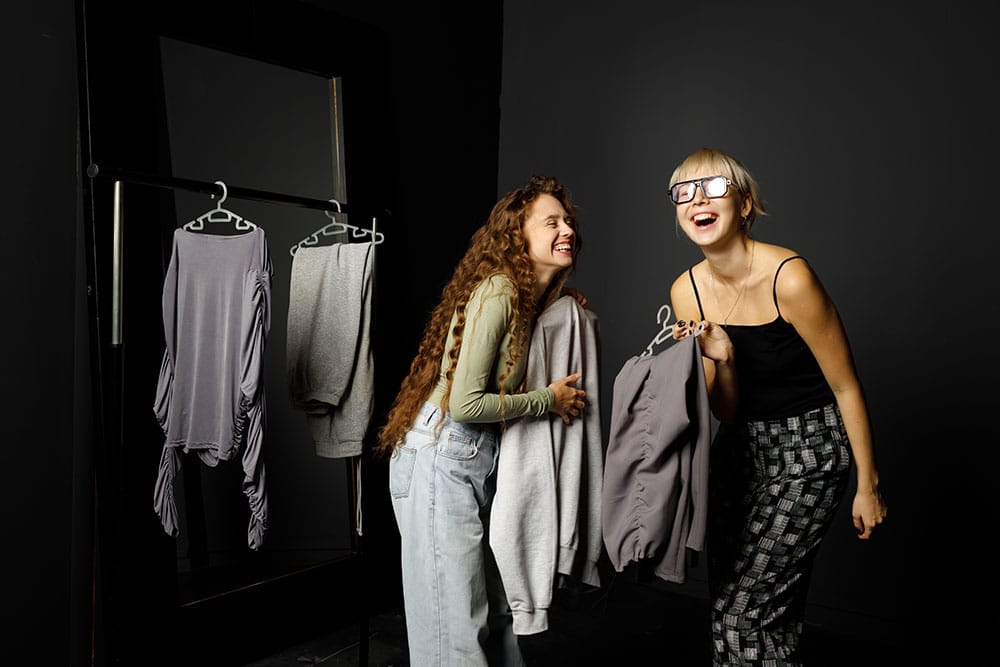
Some combinations and layering ideas to inspire your outfits:
- Graphic Tee and Blazer: Pair a graphic tee with a tailored blazer, slim-fit jeans, and ankle boots.
- Sweater Over a Dress: Layer a chunky knit sweater over a flowy midi dress with ankle boots.
- Denim Jacket with Maxi Dress: Throw a denim jacket over a printed maxi dress, complete with sneakers.
- Turtleneck with Slip Dress: Wear a fitted turtleneck under a slip dress with knee-high boots.
- Shorts and Tights: Combine tailored shorts with patterned tights and an oversized sweater.
- Button-Up Shirt with Sweater Vest: Layer a button-up shirt under a sweater vest with high-waisted trousers.
- Culottes and Long Cardigan: Style wide-leg culottes with a long cardigan and fitted top.
- Peacoat with Athleisure: Wear a fitted hoodie under a peacoat with joggers and sleek sneakers.
- Flannel Shirt and Utility Jacket: Layer a flannel shirt under a utility jacket with skinny jeans and combat boots.
- Bodysuit and High-Waisted Trousers: Pair a fitted bodysuit with high-waisted trousers and a statement belt.
Styling for Different Occasions
Adapting personal style for various events and settings is essential in the fashion industry. Each occasion may require a different approach, from casual outings to formal events. For casual outings, this might involve selecting pieces that are both comfortable and stylish, such as well-fitted jeans paired with a trendy top or a relaxed sundress that allows for movement. When it comes to professional settings, a polished and sophisticated look is often necessary. This could mean opting for tailored blazers, crisp button-up shirts, or well-fitted trousers that convey a sense of authority and competence. Selecting neutral or classic colors, such as black, navy, or gray, can help create a streamlined appearance that’s both professional and versatile.
While considering the dress code, don’t forget to keep your personal style in mind; it’s possible to express individuality within the boundaries of any dress code. This might involve incorporating unique patterns or colors into your outfits, selecting accessories that reflect your personality, or choosing cuts that flatter your body type. By infusing your personal touches into your outfits, you can feel more confident and authentic, making your style a true reflection of who you are, no matter the occasion.
7. The Role of Personal Style in Modeling
Standing Out in Crowds
In the competitive modeling industry, standing out is essential for success. Personal style enables models to differentiate themselves from their peers by creating a unique identity that resonates with their personality and values. This individuality not only captures the attention of clients and agencies but also helps models become recognizable figures within the fashion landscape. A well-defined personal style can act as a branding tool, making a model memorable in castings and fashion shows.
How to stand out in crowds:
To stand out in the modeling industry, models can adopt several effective strategies:
- Build a Cohesive Brand: Maintain consistency across online platforms and in-person appearances. This includes visual aesthetics, messaging, and overall style, ensuring that your brand is recognizable and professional.
- Focus on Cause-Driven Initiatives: Aligning your brand with social causes can enhance relatability. This approach allows you to connect with audiences and brands that share similar values, making your image more meaningful.
- Prioritize Quality Content: Invest in high-quality visuals and a consistent aesthetic for your portfolio and social media. This professionalism helps establish credibility and attracts potential clients and followers.
- Engage Directly with Your Audience: Foster community by interacting with your followers through comments and live sessions. This engagement can build loyalty and deepen connections, enhancing your overall brand presence.
- Exude Professionalism at Events: Always maintain a polished image at public appearances. Punctuality, appropriate styling, and professional behavior not only reinforce your brand but also signal reliability to clients and agencies.
Attracting Specific Clients
Models with a distinct personal style are better equipped to attract specific brands and projects that align with their image. Many companies look for models whose aesthetics and values mirror their own, and having a clear personal style aids in showcasing this alignment. By presenting a consistent image, models can effectively communicate their suitability for campaigns, increasing their chances of securing lucrative contracts. This strategic approach to personal branding ensures that models attract opportunities that genuinely reflect their fashion sensibilities.
How to attract specific clients
To effectively attract specific clients in the modeling industry, models can strategically align their personal style with the brands they wish to work with. Here are some insights:
- Defining Your Brand Identity: Models should clearly define their personal brand by understanding their unique aesthetic and how it resonates with potential clients. This involves identifying key characteristics of their style—such as edgy, bohemian, or classic—that can appeal to specific brands.
- Consistent Image Across Platforms: Maintaining a cohesive image across social media and professional profiles is crucial. This consistency helps brands quickly identify if a model aligns with their image and values. Using similar styles, color palettes, and themes in posts can strengthen brand recognition.
- Engagement and Interaction: Building relationships with brands through social media can be beneficial. Engaging with brands by commenting on their posts or sharing content that resonates with their ethos can create a connection that might lead to collaboration opportunities.
- Showcasing Versatility: While having a distinct personal style is important, demonstrating versatility is equally crucial. Models should showcase a range of looks that still reflect their core style. This versatility can appeal to a wider range of clients, showing that they can fit various brand aesthetics while staying true to their identity.
- Using Visual Identity: A strong visual identity, including professional headshots and a defined color palette, can help models present themselves effectively. This visual branding should be memorable and reflect the model’s personality, making it easier for brands to remember them for future campaigns.
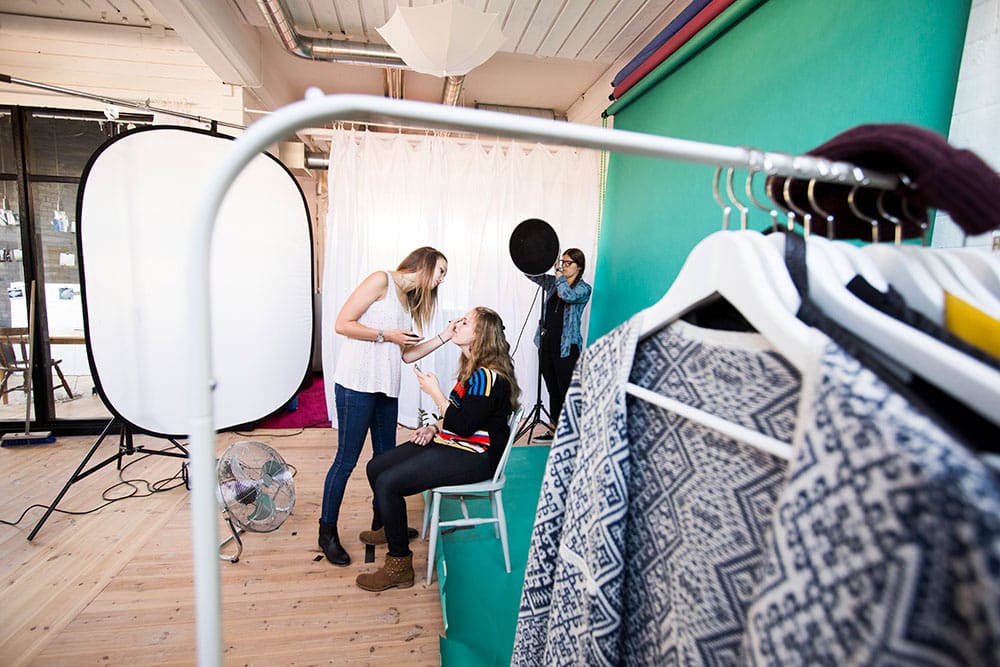
Collaborating with Creative Team
Personal style also influences how models collaborate with creative teams, including photographers, stylists, and makeup artists. When a model has a well-defined aesthetic, it facilitates better communication and collaboration, allowing for a more productive and innovative creative process. This synergy is vital in producing strong visuals that benefit both the model and the brand. By effectively expressing their style and preferences, models can enhance the overall outcome of shoots, making their contributions invaluable.
How to effectively collab with the creative team:
- Enhanced Communication: Models with a defined style can articulate their preferences more clearly, helping the creative team understand how to best represent them in a shoot. This clarity leads to more efficient discussions about the mood, concept, and visual direction.
- Synergistic Collaboration: A model’s unique aesthetic allows for better synergy with other team members. When everyone involved has a shared understanding of the model’s style, it results in cohesive visuals that resonate with the intended message of the campaign.
- Inspiration for Styling Choices: A model’s personal style can inspire makeup artists and stylists to experiment with complementary looks. This creativity often leads to innovative outcomes that highlight the model’s features and align with the overall theme of the shoot.
- Conceptual Consistency: Having a strong personal style aids in maintaining conceptual consistency throughout the project. When the model’s aesthetic aligns with the creative vision, it ensures that every element—makeup, clothing, and lighting—works harmoniously.
- Adaptability and Flexibility: Models with a well-defined style often exhibit greater adaptability, allowing them to respond to feedback and make real-time adjustments during a shoot. This flexibility enhances the overall quality of the visuals produced.
Building a Personal Brand
Ultimately, personal style is integral to building a memorable personal brand. A well-crafted brand helps models maintain consistency across various platforms, including portfolios and social media, which enhances their visibility and fosters trust among clients and audiences. By investing time and effort into developing their unique personal style, models can create a brand that stands out in the crowded fashion industry, paving the way for long-term success and career sustainability.
How to build a well-crafted personal brand
When building a personal brand as a model, it’s essential to create a cohesive and memorable identity that reflects your style, personality, and values. Here are some key strategies to consider:
- Professional Online Presence: A well-designed personal website serves as your portfolio, showcasing your best work and personality. It should be visually appealing and easy to navigate, helping potential clients and collaborators understand your brand identity.
- Engaging Social Media: Utilize platforms like Instagram and TikTok to share your modeling journey and personal insights. Regularly post high-quality content that aligns with your brand and engage with your audience to foster a community around your image.
- Networking and Relationship Building: Establishing connections within the industry is crucial. Attend events, collaborate with other professionals, and engage in online communities to strengthen your network, which can lead to valuable opportunities.
- Consistent Visual Identity: Develop a recognizable visual style by choosing a color palette and aesthetic that resonate with your brand. This consistency across all platforms reinforces your identity and makes you more memorable.
- Evolve with Authenticity: As you progress in your career, adapt your brand to reflect your growth and experiences. While it’s essential to stay relevant with industry trends, maintaining authenticity is key to connecting with your audience.
8. Additional Considerations
Sustainability and Ethical Fashion
In today’s fashion landscape, the integration of sustainability and ethical practices into personal style is increasingly vital. Models can leverage their visibility to promote sustainable fashion choices, which often emphasize reduced consumption, support for ethical brands, and a shift from fast fashion to slow fashion. By choosing sustainable materials, brands can minimize their environmental footprint and encourage a circular economy. This approach not only benefits the planet but also fosters an ethical production process, ensuring fair wages and safe working conditions for garment workers. Many brands are now emphasizing transparency in their supply chains, which allows consumers to make informed choices and support companies that align with their values.
Incorporating sustainability and ethical practices
Models can significantly influence this movement by promoting eco-friendly fashion choices and raising awareness about ethical practices. Here are some additional insights:
- Support for Local Artisans: Many models are championing local artisans and sustainable brands, often advocating for handcrafted pieces that support fair labor practices. This shift not only showcases unique styles but also ensures that the artisans receive fair compensation for their work.
- Transparency in Fashion: A growing trend is the push for transparency in the fashion supply chain. Models can leverage their platforms to highlight brands that openly share information about their sourcing, production methods, and labor practices. This approach helps consumers make informed decisions and encourages brands to adopt more ethical practices.
- Second-Hand and Vintage Shopping: Many models are now endorsing second-hand and vintage shopping as a sustainable alternative to fast fashion. By showcasing thrifted outfits, they not only reduce waste but also promote the idea of timeless fashion that isn’t bound by seasonal trends.
- Educational Initiatives: Some models participate in or initiate educational campaigns that teach consumers about the environmental impact of fashion. These initiatives often include workshops or social media content that provides tips on how to shop sustainably and make environmentally friendly choices.
- Collaboration with Sustainable Brands: Many models are collaborating directly with sustainable fashion brands to design capsule collections. This not only helps to infuse their personal style into the pieces but also brings visibility to ethical fashion practices
Body Positivity and Self-Acceptance
Body positivity plays a crucial role in redefining beauty standards in the fashion industry. Embracing all body types fosters inclusivity and helps individuals feel empowered to express their personal style without conforming to traditional norms. Models who advocate for body positivity can significantly influence the perception of beauty in fashion, encouraging others to celebrate their unique bodies and styles. This cultural shift is essential for creating a more accepting and diverse fashion environment.
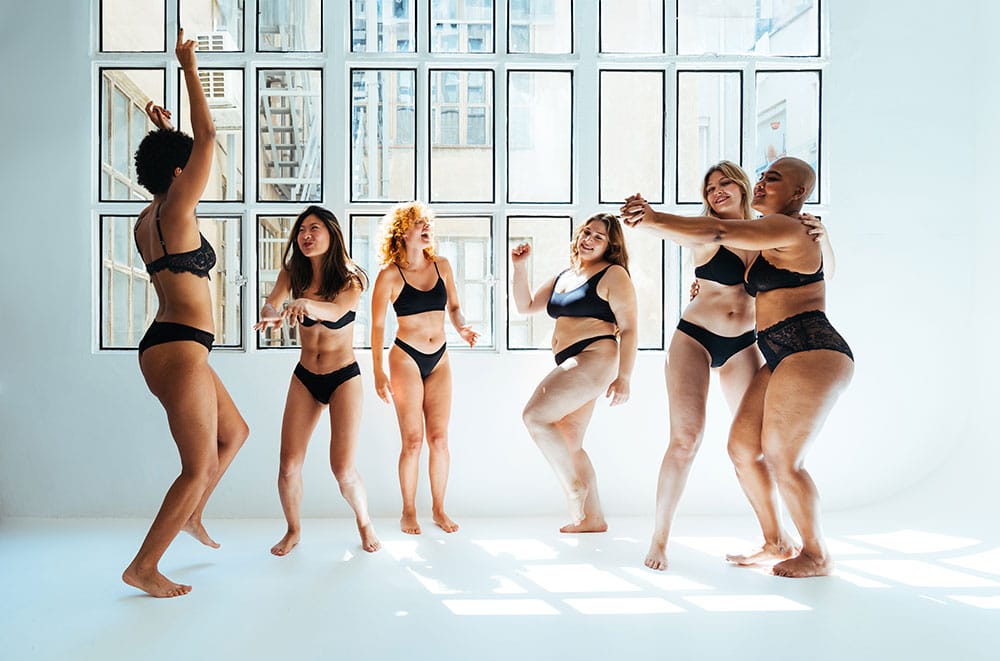
Body positivity practices:
- Representation Matters: Representation of diverse body types in fashion media is crucial for boosting self-esteem among consumers. Studies indicate that when individuals see models who resemble them in advertisements, it positively influences their self-image and increases their intention to purchase products. This trend encourages brands to feature a variety of body types, fostering a sense of inclusivity and acceptance.
- Inclusive Sizing Initiatives: Many brands are now expanding their size ranges significantly. This move not only caters to a broader audience but also sends a strong message that fashion should be accessible to everyone. For instance, brands like Universal Standard and Aerie have made substantial strides in offering extended sizes and unretouched images of models to promote authenticity and body positivity.
- Cultural Shift: The body positivity movement contributes to a larger cultural shift towards accepting and celebrating all body types. This shift is reflected in diverse marketing campaigns and the use of real, unretouched photos that resonate with consumers. Brands that embrace this shift often see increased customer loyalty and engagement.
- Empowerment Through Fashion: The emphasis on body positivity encourages brands to create clothing that empowers individuals rather than conforming to traditional beauty norms. This includes designing fashionable yet functional attire that enhances confidence and self-expression.
- Engagement and Feedback: The body positivity movement has prompted brands to engage more actively with their customers. Social media has become a platform for dialogue, allowing consumers to share experiences and hold brands accountable for their commitments to inclusivity.
Cultural Sensitivity
Understanding and respecting cultural nuances in fashion is another critical consideration. Models and brands must be aware of cultural appropriation and strive to honor the origins of various styles and garments. This involves celebrating cultural diversity while ensuring that fashion is inclusive and respectful. By acknowledging and appreciating different cultural backgrounds, models can help promote a more equitable fashion industry.
Best cultural sensitivity practices:
- Authentic Representation: Fashion brands are encouraged to engage with different cultural communities authentically. This includes featuring models from diverse backgrounds in their campaigns and using their voices to share stories and insights about the cultures being represented. Authentic representation helps build trust and credibility with consumers.
- Collaborations with Artisans: Collaborating with local artisans not only enhances the authenticity of designs but also supports the preservation of traditional skills and craftsmanship. Such partnerships allow designers to integrate unique materials and techniques into their collections, helping to sustain local economies and cultural heritage.
- Ethical Sourcing: Ethical sourcing of materials is crucial. Brands that prioritize this practice ensure that their supply chains respect the communities from which they draw inspiration. This not only helps in avoiding cultural appropriation but also emphasizes the importance of fair trade and responsible production methods.
- Educating Consumers: Brands can play an educational role by informing consumers about the cultural significance behind their designs. This storytelling aspect can enhance consumer appreciation for the artistry involved and foster a deeper connection to the garments.
- Inclusivity in Design: By designing with a focus on inclusivity, brands can challenge traditional beauty standards and promote body positivity. This involves creating clothing that accommodates various body types and celebrating the beauty of diversity.
The Impact of Social Media
Social media platforms have revolutionized how personal style is showcased and perceived. Models can utilize these platforms to express their individuality and connect with audiences on a deeper level. By sharing their fashion journeys, models can inspire others to explore their own styles while promoting brands and initiatives that align with sustainable and ethical practices. Social media also serves as a powerful tool for advocating body positivity and cultural awareness, enabling models to amplify their messages and reach wider audiences.
The impact of social media in fashion industry:
- Trend Acceleration: Social media platforms like Instagram and TikTok have dramatically sped up the fashion cycle, with trends emerging and fading almost overnight. The visual nature of these platforms allows for rapid sharing and engagement, which can create global demand for new styles at a moment’s notice.
- Democratization of Fashion: Social media has broken down barriers to entry in the fashion world. Anyone with a smartphone can showcase their style and influence trends, making fashion more inclusive. This shift allows diverse voices and styles to gain visibility, promoting a richer fashion landscape.
- Community and Connection: Platforms enable users to connect over shared fashion interests, fostering community engagement. Initiatives like themed days (e.g., “Jorts Thursday”) show how social media can create a sense of unity and collective identity within specific communities.
- Entrepreneurial Opportunities: Many young creators have launched their own clothing lines, using social media as a primary marketing tool. This accessibility allows emerging designers to reach audiences that were previously hard to tap into, leveling the playing field against larger corporations.
- Creativity and Inspiration: Social media serves as a vast source of inspiration. Users can curate feeds filled with styles that resonate with them, helping to spark creativity and encourage personal style exploration. However, it can also lead to trends that lack originality as they become overly popularized.
- Sustainability Awareness: As the environmental impact of fast fashion becomes more widely discussed, social media also plays a crucial role in promoting sustainable fashion choices and ethical practices. Influencers and brands use their platforms to advocate for conscious consumption and responsible fashion practices, encouraging followers to consider the sustainability of their choices.
Continue Reading:
Harnessing the Power of Personal Style: How Models Craft Their Unique Image / Part 1
Harnessing the Power of Personal Style: How Models Craft Their Unique Image / Part 2
Written by: Dinculescu Laurentiu
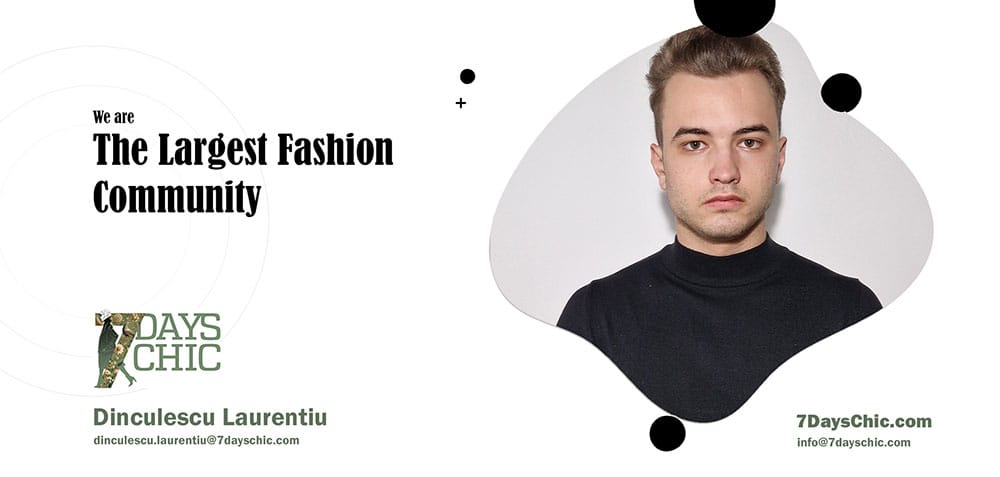

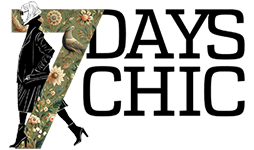
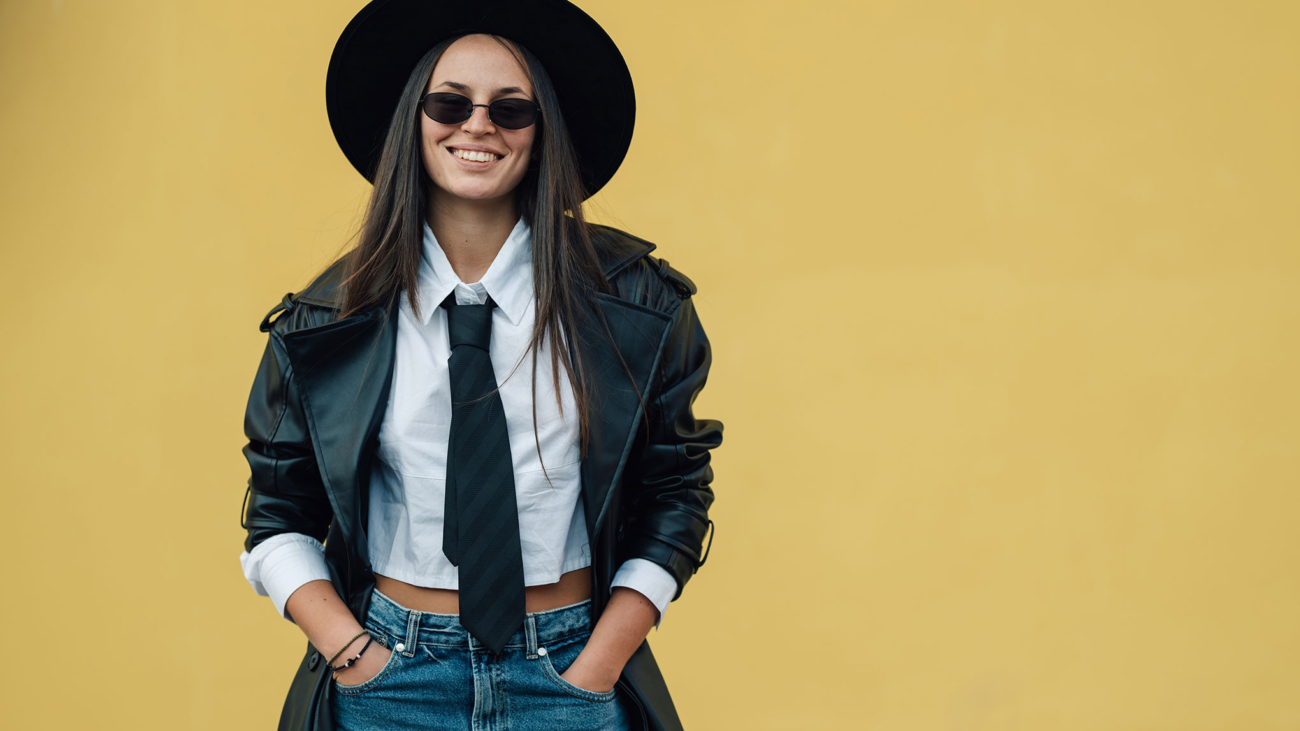
Add a Comment